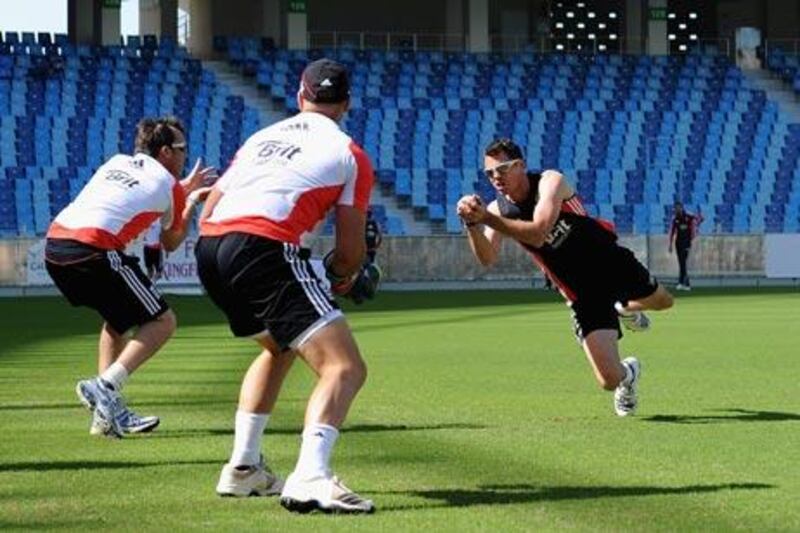Captaincy
This is an obvious one, but much will rest on how Andrew Strauss and Misbah-ul-Haq approach this series. Both are cut from similarly phlegmatic cloth, although a difference in the quality of tools compels the Pakistani to a greater degree of pragmatism.
Strauss has been almost unnoticed in England's rise, mostly in a good way, but of late, in a more worrying one; he averages just over 33 in his last 12 Tests as captain, with a solitary hundred.
Pakistan's rise in the last year, meanwhile, has been forged in the mould of Misbah's batting; cautious, slow but ultimately effective (and still prone to brain fades).
But - and this is a huge bonus for Pakistan captains - Misbah's form has been good (he averages nearly 76 in 12 Tests as captain) and so his authority is unquestioned so far. If that equations stays at the end of the series - Strauss out of runs, Misbah unquestioned - it will have been a good one for Pakistan.
England's pace bowlers against Pakistan's top order
If Pakistan's current top and middle order are often derided for being too inert and reactive, then we have England's pace attack to thank.
In the summer of 2010, James Anderson and his men bowled out Pakistan for under a hundred three times in four Tests; that capped a harrowing period from 2009 in which Pakistan's batting has rarely looked as unsettled, inexperienced and fragile. Such are the scars that they have drafted in grafters to staunch such collapses.
But England's pace attack, new and old ball, is probably even better now with Stuart Broad's growth and if early morning conditions in Dubai offer even a sniff of swing or seam, they will thrive.
And even if conditions are not conducive, Anderson, in particular, is especially good at adapting and adjusting and playing on batsmen's patience.
The battles between Anderson, Broad, Taufeeq Umar, Azhar Ali and Younis Khan could be the making of the series.
Saeed Ajmal against England's middle and lower order
Graeme Swann's old-school ways have justifiably garnered plaudits over the last couple of years, but he has faded just a little in the last year (more accurate perhaps that his fast bowling colleagues have shone even brighter).
The best off-spinner last year, a more modern practitioner of less flight, many doosras as well a biggish off-break, was Saeed Ajmal, the world's leading wicket taker in 2011 with 50 victims.
Every bit as much a character as Swann - his television spots are works of comic genius - Ajmal's breakthrough Test performance came against England, in Edgbaston, Birmingham, in 2010, when their tail looked lost against his doosras (to be fair, they are not the only lower-order that has).
With his place now cemented, a confident Ajmal on a roll, or part of an attack on a roll, is as dangerous a prospect as any. Abdul Rehman and even Mohammad Hafeez will provide robust support.
Pitches
It is tempting to write off the surfaces in Dubai and Abu Dhabi as flat, lifeless and frankly uninspired.
That would have been true of Pakistan's 2010 series against South Africa, but after this winter's Tests against Sri Lanka, the truth is more complex.
The turf at Dubai International Cricket Stadium for the second Test between Pakistan and Sri Lanka was, in fact, near perfect.
On the first morning, it seamed and there was swing in the air. It then eased up for batting for a couple of days, all the while offering reverse swing. Finally it broke up enough to make spin a real threat.
The pitch at Abu Dhabi did not break as much, but would still have provided a result but for dropped chances.
Should similar pitches be prepared again - not necessary if Pakistan prefer to play safer - there is enough evidence to suggest that while batsmen should generally prosper, quality bowlers should also have plenty to work with.
Reverse swing
Outside of Zaheer Khan, probably the most skilled reverse swing bowlers are to be found in the UAE over the next month and a bit. With Umar Gul, Wahab Riaz, Junaid Khan, Jimmy Anderson and Stuart Broad in action, there will be plenty to look out for as soon as the ball starts to lose its shine.
England have painstakingly developed the skill over time and are more subtle and controlled in the way they employ it.
To Gul, Junaid and Wahab, it comes naturally as part of a long-established legacy and they can be altogether more destructive - but erratic too - when it clicks.
But, as Pakistan found against Sri Lanka, it will not come easy.
Gul talked of the outfield being too lush at Abu Dhabi, for example, to be able to extract reverse.
But Sri Lanka managed well in Dubai, where the enclosed stadium creates different atmospherics than those found in most stadiums





